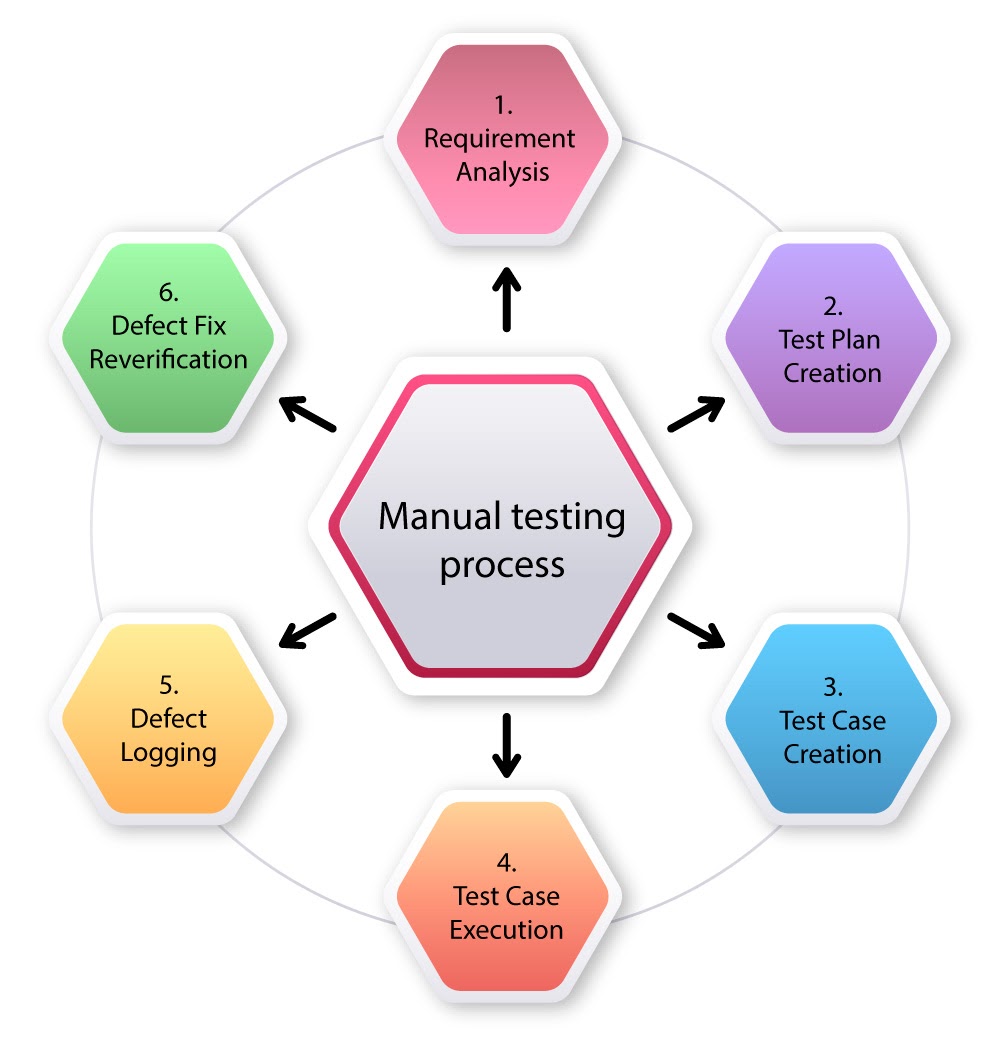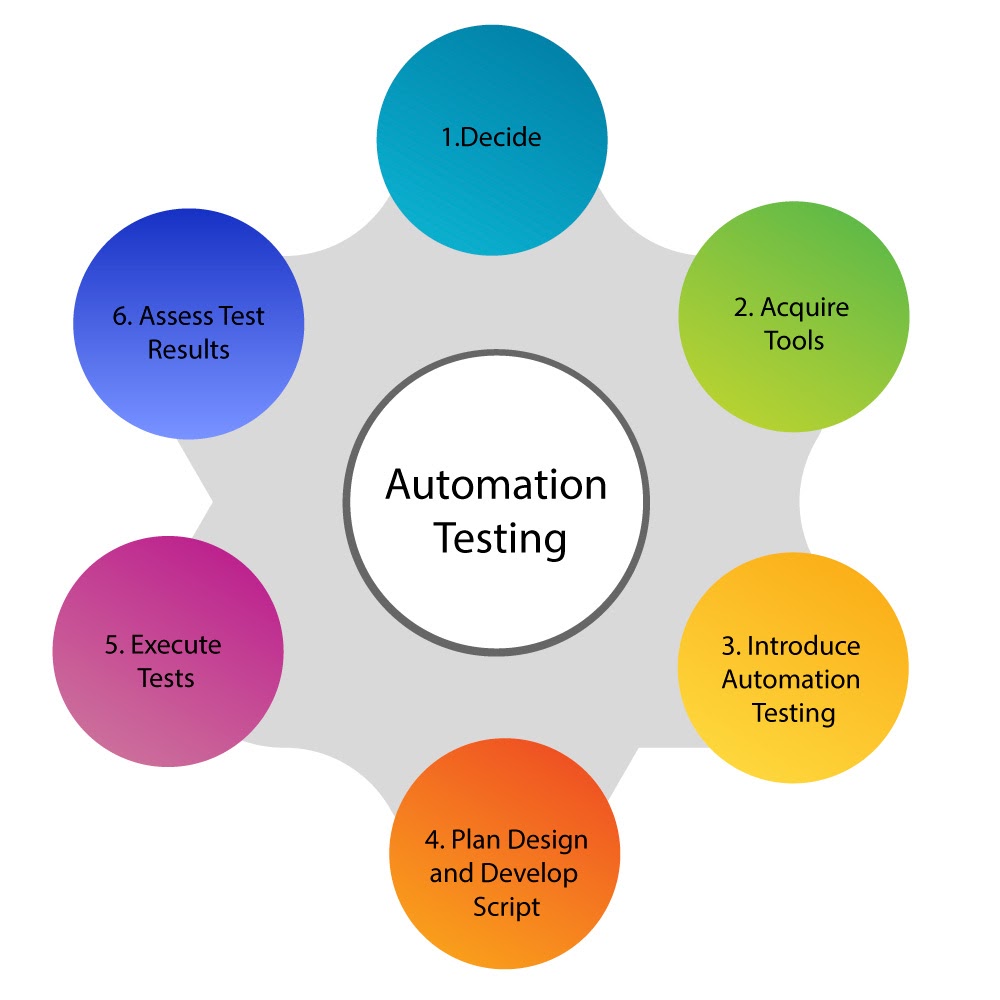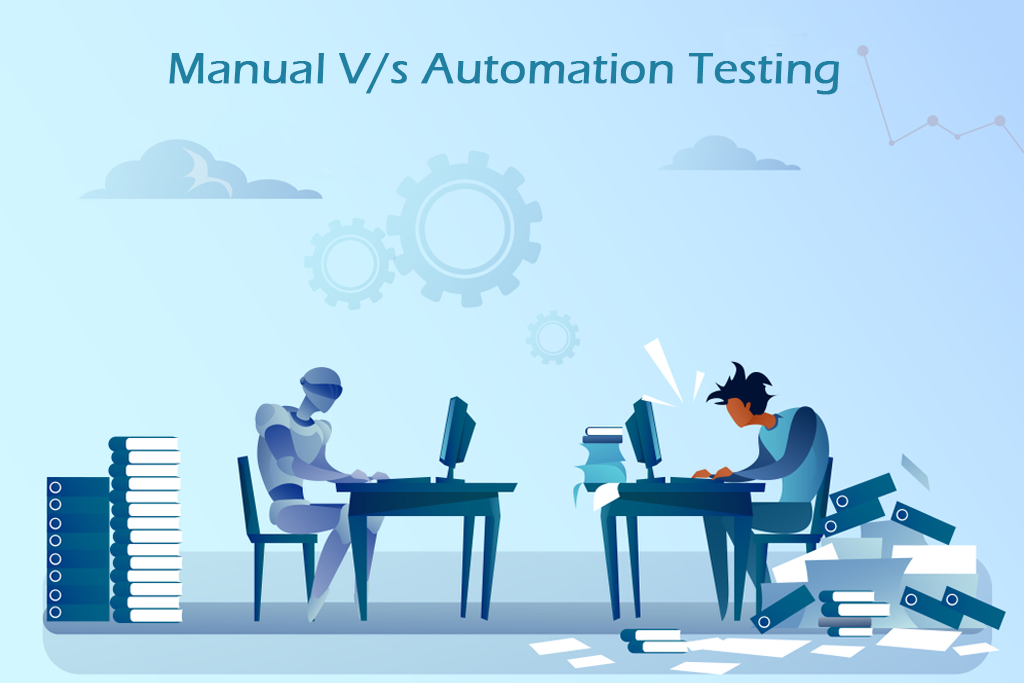In an IT product, software testing plays a significant part. Obviously, software testing is a big domain, but the two main categorizations are manual testing and automation testing.
While every coin has two faces and thus we can understand the importance of two testing types through this blog. Manual and automated offers advantages and disadvantages.
Let’s understand their definition and key roles.
What is manual and automated testing?
Manual testing-
The word manual justifies itself. Manual testing is performed by hand, and this process involves manually testing software defects. To ensure applications correct behavior, they require a tester to play the role of end-user. Quality Assurance specialist works with eagles eye and ensures the application works efficiently and accurately. He follows conditions written in test cases. Of course, you are thinking about the primitive nature of manual testing!! But let us clear one point, despite being primitive nature, it still holds an eminent part in the testing world. Because certain functionality cannot be done through automated testing.
E.g., mobile testing and wearable need field testing in case of the physical environment. QA detects bottlenecks during unpredicted stressful conditions through monkey test. Suppose a user forgets a mobile device in his pocket with an app running and accidentally tap on the screen. Then what can be consequences? Will the app crash? This type of error can be corrected only by manual testing.
In manual testing, a QA executes the test case and generates the test reports without using any automation software testing tools.
This classical method of testing detects bugs in the software systems, and testing is generally conducted by an experienced tester to complete the process.
When to use manual testing?
-
Exploratory testing- without knowing the requirements, exploratory testing is performed by domain experts, and it also helps in exploring the functionalities.
-
Usability testing- this testing function helps to check whether the end-user understood the application quickly or not, and will he be able to operate.
-
Ad-hoc testing- it is an informal testing type, and testers randomly test the application without following test design techniques and documents.

Types of manual testing
-
Black Box Testing
-
Unit Testing
-
System Testing
-
Integration Testing
-
Acceptance Testing
Automation testing-
In this process of testing software, an automation tool finds the defects. Through the automation tool, we execute the test script and generates results. Popular automation tools are HP QTP/UFT, Selenium WebDriver, etc.
Well, to maintain the balance between two testing ways can prove quite tricky. Now the question is - is it the best approach?
Now the question is why automation?

-
Manual testing at the time of testing work fields, negative scenarios, and workflows are time-consuming and expensive.
-
Multilingual site manual testing is difficult.
-
Does not require human intervention and can be run unattended (overnight)
-
Increases test execution speed
-
Error-free most of the time.
Test cases suitable for automation-
-
Business-critical test cases
-
Test cases repeatedly executed
-
Test cases difficult to perform
-
Time-consuming test cases
Test cases not suitable for automation-
-
Newly designed test cases that are not executed manually once.
-
Frequently changing requirements of the test cases
-
Ad-hoc based test cases execution
Software testing types
-
Smoke Testing
-
Unit Testing
-
Integration testing
-
Functional Testing
-
Keyword Testing
-
Regression Testing
-
Data-Driven Testing
-
Black Box Testing

Comparison between two types of testing

| Reasons | Automation Testing | Manual Testing |
| Reliability | It is more reliable as the same operation functions each time. It eliminates the risk of human errors | Due to human error, it is not reliable; it is not necessary that manual testing accurate all the time |
| Investment | The initial investment is higher and a must for testing tools. ROI is higher in the long run | The initial investment is less than automation but necessary for human resources. ROI is lower in the long run |
| Practical Option | When we do regressions testing, automation testing is a practical option | Manual testing is a practical option, and test cases only need to run once or twice |
| Test Execution | It is faster as execution operates through software tools and thus needs less human resources | It is time-consuming and needs more human resources |
| Exploratory Testing | Not Possible | Possible |
| Performance Testing | Performance Testing like Load Testing, Stress Testing, etc. is a practical option in automation testing | Not a practical option |
| Execution Time | It can reduce test execution time and can be done parallel | It is difficult to execute test cases. It needs more human power and thus becomes expensive |
| Programming Knowledge | Required | Not required |
| Build Verification Testing | BVT is highly recommended | BVT not recommended |
| Human Intervention | Not effective to do User Interface testing because of no human intervention | Highly effective to do User Interface testing as human intervention is involved |
Conclusion-
By selecting only manual or automation is not the right choice. There is a need for a balance between the two. For successful testing, manual and automation go hand-in-hand. All you need is the right testing in the right environment. Well, the point of consideration is no matter how good automation testing is but you cannot automate everything. We hope the above points proved helpful to you in understanding the difference and the right balance.

Post A Comment